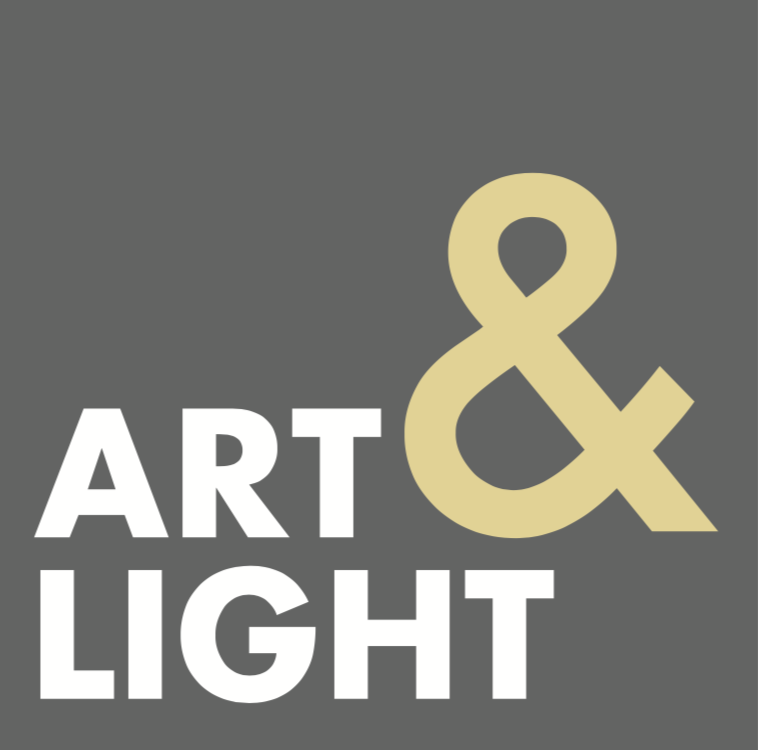With her current duet exhibition with Olivia Bonilla, Maximalist Playground, hanging in our main exhibition space, we thought it would be a good time to go behind the scenes with artist and Assistant Gallery Director, Liz Rundorff Smith.
Take a look at the video for a visual and be sure to keep reading for our short Q&A!
Q: Can you describe the evolution of your artistic practice? How has your work changed over time and led to the current body of work you are making?
A: My work seems to be in a continuous state of change. I find it really challenging to create consistency in my work because I am always chasing a new idea and finding new questions that I want to explore. In part, committing to the series of “trophy” paintings (the 10x8 inch encaustic and pastel powder pieces) over the last few years has made me commit to seeing how far I can push a body of work that comes from repeating the same process with small changes in color and form from one to the next. I’ve worked in several different mediums over the course of my career, including clay, photography, painting and sculpture. I’m finding that my current work in encaustic is really informed by all of those mediums coming together.
Q: The work in Maximalist Playground features your Trophy Series pieces, tell us a little bit more about the vessel and the trophy means to you, and how they serve as metaphors
A: I like to create forms that hover somewhere in between identifiable shapes; so some of the “trophies” could be urns or vessels too. What I find intriguing is the very different associations we make with the slightest change in shapes. A trophy serves as a celebration of an accomplishment in life while an urn can be used to contain ashes when someone dies or food and water to sustain life. Overall, the shapes ride a very thin line between an association with life or death. By naming the series “Trophies” I’m telling you that they are meant to be celebratory either way.
Q: You work with nostalgic and kitschy color pallets, can you tell us a bit more about what these colors mean to you and what they symbolize in your pieces.
A: I’m referencing color combinations that are pulled from the design trends of the eighties and nineties. For me these eras in design are nostalgic because I’m reminded of my childhood. Checkered patterns were everywhere in the eighties and I was a big fan. I remember having a bike with a checkered pattern, sunglasses, my backpack, my first pair of Vans, a hat that for some reason had a checkered pattern of fabric tails in the back, even my folders and Trapper Keeper were checkered. There are certain colors that, in my experience, really seem to identify a design trend. I associate lavender, turquoise and hot pink with the eighties, purple, grass green and yellow ochre reference nineties hip-hop fashion.
Q: The titles you give your pieces feel personal and add a narrative quality to your work, could you describe your process for coming up with titles, and how language plays a roll in your work?
A: I think titles are a really important part of my work. As I’m working I’m often writing words and phrases in my sketchbook so that I have an anchor as a piece progresses that helps to inform the decisions I make. Sometimes I write down a memory that’s important to me and then I try to extract words from my writing. Or I might be going through something difficult that makes a word or phrase resonate and I make that thought central to the piece so that the work serves as a reminder of what was going on in my life at the time. I’m really interested in words that have double meaning so that my intent is somewhat open ended and can change with context.
Q: What advice would you give to emerging artists or students working to establish a consistent studio practice? What helps drive you to keep making even during artist block.
A: At some point I realized that no one was ever going to encourage me to spend more time painting. So if I had to pick the most important piece of advice for emerging artists I would say time management is a big one. I try to make decisions to honor my time and commitment to my practice. I’ve learned to work in small segments of time – sometimes that means working on small acrylic paintings on paper at my kitchen table, or working on multiple paintings in varying sizes in the studio so that I can add a little to each piece in short painting sessions – I’ve built the practice into my life rather than waiting for my life to change to give me more time.
